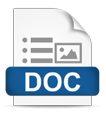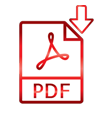Optimalisasi Decision Quality: Efek Langsung dan Tidak Langsung dari Workload, Pelatihan, dan Resiliensi Psikologis melalui Burnout Reduction
Abstract
Full Text:
PDFReferences
Ajzen, I. (1991) ‘The theory of planned behavior’, Organizational behavior and human decision processes, 50(2), pp. 179–211.
Bakker, A.B. and Demerouti, E. (2017) ‘Job demands-resources theory: Taking stock and looking forward’, Journal of Occupational Health Psychology, 22(3), pp. 273–285. Available at: https://doi.org/10.1037/OCP0000056.
Bandura, A. (1977) ‘Self-efficacy: toward a unifying theory of behavioral change.’, Psychological review, 84(2), p. 191.
Baumeister, R.F. et al. (1998) ‘Ego depletion: Is the active self a limited resource? Personality Processes and Individual Differences, 74, 1252–1265’.
Beach, L.R. and Connolly, T. (2005) The psychology of decision making: People in organizations. Sage publications.
Le Blanc, P.M. et al. (2007) ‘Take care! The evaluation of a team-based burnout intervention program for oncology care providers.’, Journal of applied psychology, 92(1), p. 213.
Bronfenbrenner, U. (1979) The ecology of human development: Experiments by nature and design. Harvard university press.
Carayon, P. and Gurses, A.P. (2008) ‘Nursing Workload and Patient Safety—A Human Factors Engineering Perspective’, Patient Safety and Quality: An Evidence-Based Handbook for Nurses [Preprint]. Available at: https://www.ncbi.nlm.nih.gov/books/NBK2657/ (Accessed: 2 August 2025).
Castillo-González, A. et al. (2024) ‘Relation and effect of resilience on burnout in nurses: A literature review and meta-analysis.’, International nursing review, 71(1), pp. 160–167. Available at: https://doi.org/10.1111/INR.12838.
Connor, K.M. and Davidson, J.R.T. (2003) ‘Development of a new resilience scale: The Connor-Davidson Resilience Scale (CD-RISC)’, Depression and Anxiety, 18(2), pp. 76–82. Available at: https://doi.org/10.1002/DA.10113.
Creswell, J.W. and Creswell, J.D. (2017) Research design: Qualitative, quantitative, and mixed methods approaches. Sage publications.
Demerouti, E. et al. (2001) ‘The job demands-resources model of burnout.’, Journal of Applied psychology, 86(3), p. 499.
Diamantopoulos, A. and Siguaw, J.A. (2006) ‘Formative Versus Reflective Indicators in Organizational Measure Development: A Comparison and Empirical Illustration’, British Journal of Management, 17(4), pp. 263–282. Available at: https://doi.org/10.1111/J.1467-8551.2006.00500.X.
Fornell, C. and Larcker, D.F. (1981) ‘Evaluating Structural Equation Models with Unobservable Variables and Measurement Error’, Journal of Marketing Research, 18(1), pp. 39–50. Available at: https://doi.org/10.1177/002224378101800104.
Hair, Jr.J.F., Hult, G.T.M. and Ringle, C.M. (2022) A Primer on Partial Least Squares Structural Equation Modeling (PLS-SEM), SAGE Publications, Inc. SAGE PublicationsSAGE Publications.
Harms, P.D. et al. (2018) ‘Resilience and well-being’, Handbook of well-being, pp. 1–12.
Hart, S.G. and Staveland, L.E. (1988) ‘Development of NASA-TLX (Task Load Index): Results of empirical and theoretical research’, in Advances in psychology. Elsevier, pp. 139–183.
Hobfoll, S.E. (1989) ‘Conservation of resources: a new attempt at conceptualizing stress.’, American psychologist, 44(3), p. 513.
Huber, G.P. and Power, D.J. (1985) ‘Retrospective reports of strategic-level managers: Guidelines for increasing their accuracy’, Strategic Management Journal, 6(2), pp. 171–180. Available at: https://doi.org/10.1002/SMJ.4250060206.
Kahneman, D. and Tversky, A. (2013) ‘Prospect Theory: An Analysis of Decision Under Risk’, in, pp. 99–127. Available at: https://doi.org/10.1142/9789814417358_0006.
Karasek, R.A. (1979) ‘Job Demands, Job Decision Latitude, and Mental Strain: Implications for Job Redesign’, Administrative Science Quarterly, 24(2), p. 285. Available at: https://doi.org/10.2307/2392498.
Klein, G.A. (2017) Sources of power: How people make decisions. MIT press.
Kolb, D.A. (2014) Experiential learning: Experience as the source of learning and development. FT press.
Luthans, F., Vogelgesang, G.R. and Lester, P.B. (2006) ‘Developing the psychological capital of resiliency’, Human resource development review, 5(1), pp. 25–44.
Luthar, S.S. and Cicchetti, D. (2000) ‘The construct of resilience: Implications for interventions and social policies’, Development and psychopathology, 12(4), pp. 857–885.
Maslach, C. and Jackson, S.E. (1981) ‘The measurement of experienced burnout’, Journal of Organizational Behavior, 2(2), pp. 99–113. Available at: https://doi.org/10.1002/JOB.4030020205.
Maslach, C. and Leiter, M.P. (2016) ‘Understanding the burnout experience: recent research and its implications for psychiatry’, World Psychiatry, 15(2), pp. 103–111. Available at: https://doi.org/10.1002/WPS.20311.
Masten, A.S. (2001) ‘Ordinary magic: Resilience processes in development.’, American psychologist, 56(3), p. 227.
McAllister, M. and McKinnon, J. (2009) ‘The importance of teaching and learning resilience in the health disciplines: a critical review of the literature’, Nurse education today, 29(4), pp. 371–379.
Mealer, M., Jones, J. and Moss, M. (2012) ‘A qualitative study of resilience and posttraumatic stress disorder in United States ICU nurses’, Intensive care medicine, 38(9), pp. 1445–1451.
Neuman, W.L. (2013) Social Research Methods: Qualitative and Quantitative Approaches. Pearson Education (Always learning). Available at: https://books.google.co.id/books?id=Ybn3ngEACAAJ.
Nooraie, M. (2008) ‘Decision magnitude of impact and strategic decision‐making process output: The mediating impact of rationality of the decision‐making process’, Management Decision, 46(4), pp. 640–655.
Nutt, P.C. (2003) ‘Why Decisions Fail: Avoiding the Blunders and Traps That Lead to Debacles’, https://doi.org/10.5465/ame.2003.9474995, 17(1), pp. 130–132. Available at: https://doi.org/10.5465/AME.2003.9474995.
Pines, A. and Aronson, E. (1988) Career burnout: Causes and cures. Free press.
Rísquez, M.I.R. et al. (2013) ‘Estudio de la relación entre la complejidad del centro hospitalario y la satisfacción del usuario que ingresa desde urgencias con la atención de enfermería recibida en esta área’, Emergencias: Revista de la Sociedad Española de Medicina de Urgencias y Emergencias, 25(3), pp. 177–183.
Robbins, S.P.. and Judge, Tim. (2024) Organizational behavior. Pearson Education Limited.
Rowe, A.J. and Boulgarides, J.D. (1992) ‘The decision maker’, Managerial decision making: A guide to successful business decisions, pp. 21–43.
Rushton, C.H. et al. (2015) ‘Burnout and resilience among nurses practicing in high-intensity settings’, American journal of critical care, 24(5), pp. 412–420.
Schaufeli, W. and Enzmann, D. (2020) The Burnout Companion To Study And Practice: A Critical Analysis. CRC Press. Available at: https://books.google.co.id/books?id=yowEEAAAQBAJ
Schaufeli, W.B. and Taris, T.W. (2014) ‘A Critical Review of the Job Demands-Resources Model: Implications for Improving Work and Health’, in Bridging Occupational, Organizational and Public Health: A Transdisciplinary Approach. Springer, Dordrecht, pp. 43–68. Available at: https://doi.org/10.1007/978-94-007-5640-3_4.
Simon, H.A. (2012) The new science of management decision., The new science of management decision. Harper & Brothers. Available at: https://doi.org/10.1037/13978-000.
Spector, P.E. and Jex, S.M. (1998) ‘Development of four self-report measures of job stressors and strain: Interpersonal Conflict at Work Scale, Organizational Constraints Scale, Quantitative Workload Inventory, and Physical Symptoms Inventory.’, Journal of occupational health psychology, 3(4), pp. 356–367. Available at: https://doi.org/10.1037/1076-8998.3.4.356.
Spetzler, C., Winter, H. and Meyer, J. (2016) ‘DECISION QUALITY: Value Creation from Better Business Decisions’, Decision Quality: Value Creation from Better Business Decisions, pp. 1–237. Available at: https://doi.org/10.1002/9781119176657.
Sweller, J. (1988) ‘Cognitive load during problem solving: Effects on learning’, Cognitive Science, 12(2), pp. 257–285. Available at: https://doi.org/10.1016/0364-0213(88)90023-7.
Ungar, M. (2008) ‘Resilience across cultures’, British journal of social work, 38(2), pp. 218–235.
Vroom, V.H. and Jago, A.G. (1988) The new leadership: Managing participation in organizations. Prentice-Hall, Inc.
West, C.P. et al. (2016) ‘Interventions to prevent and reduce physician burnout: a systematic review and meta-analysis’, The Lancet, 388(10057), pp. 2272–2281. Available at: https://doi.org/10.1016/S0140-6736(16)31279-X/ATTACHMENT/007E3299-D101-4C66-A2AC-85CDD62CBA73/MMC1.PDF.
Wickens, C.D. (2002) ‘Multiple resources and performance prediction’, Theoretical issues in ergonomics science, 3(2), pp. 159–177.
DOI: http://dx.doi.org/10.30742/pragmatis.v6i2.4850
Refbacks
- There are currently no refbacks.
Indexed By:
PRAGMATIS by https://journal.uwks.ac.id/index.php/pragmatis/ is licensed under Creative Commons Attribution-ShareAlike 4.0 International
PRAGMATIS
Department of Management, Faculty of Economics and Business Wijaya Kusuma Surabaya University
Dukuh Kupang XXV No. 54 Surabaya, Indonesia 60225
Phone: +62315613231
email: pragmatis@uwks.ac.id
e-ISSN 2828-8238









